The Scaredy Cat Reading System (SCRS) is a comprehensive mastery-based phonics system. The program consists of four levels with the fourth being the express level. The Scaredy Cat Reading System Level 3 teaches reading and spelling, along with a handful of other language arts subtopics such as word building skills, comprehension, vocabulary, fluency, beginning language skills, and thinking skills. The author, Joyce Herzog, has over 30 years of experience teaching children with special needs and learning disabilities in both the classroom, private, and homeschool settings. She wrote stories and developed characters for the letters in the alphabet. The program consists of 15 lessons based on the phonics rules presented in the program. A summary of the fifteen rules can be found in the teacher manual. Children can apply the skills learned to everyday reading and writing. Children should not move to the next lesson before having the ability to fluently read 30 wpm and can spell 9 out of 10 randomly chosen words which indicates that they have reached mastery. SCRS covers concepts based on the ideas and stories presented in "The Story of the LetterMaster Who Gave the Letters Their Jobs." Concepts thoroughly covered include brave and scared vowels, CVC words, tricky letter combinations or blends, ending blends, digraphs, vowel teams or diphthongs, multi-syllable or compound words, contractions, homonyms, rebel words (sight words), r-controlled (r bullies), schwa sound (lazy vowels), silent e, and more. There is no indicated age range given in the book, but I would say that the entire reading program is meant for beginning readers in elementary grades pre-k through 3rd grade. This particular level may be more suitable for first through third grade.
What's Included?
Teacher Manual and Audio CD's
The spiral-bound teacher's manual contains a variety of hands-on learning activities and teacher tips within the 158 black-and-white pages. Inside the front cover are two attached envelopes holding the two audio CD's which present the core of the curriculum organized by lessons. The teacher announces the lesson number prior to beginning the presentation. Scripted lessons are inside the teacher manual enabling the parent to follow along. You have the option of listening or teaching with a script. You will find a "Table of Contents," "Foreword," "Introduction," "Kit Component List," and an "Entrance Exam" towards the front of the teacher manual. The bulk of the book contains the "Teacher Training" section. One thing I found quite interesting about this curriculum was its versatility and flexibility. The author notes several daily menu plans that can be implemented. This method is unique to the program. There is an "Answer Key" found at the back of the book.
The spiral-bound teacher's manual contains a variety of hands-on learning activities and teacher tips within the 158 black-and-white pages. Inside the front cover are two attached envelopes holding the two audio CD's which present the core of the curriculum organized by lessons. The teacher announces the lesson number prior to beginning the presentation. Scripted lessons are inside the teacher manual enabling the parent to follow along. You have the option of listening or teaching with a script. You will find a "Table of Contents," "Foreword," "Introduction," "Kit Component List," and an "Entrance Exam" towards the front of the teacher manual. The bulk of the book contains the "Teacher Training" section. One thing I found quite interesting about this curriculum was its versatility and flexibility. The author notes several daily menu plans that can be implemented. This method is unique to the program. There is an "Answer Key" found at the back of the book.
Student Activity Book
A 121-page consumable spiral-bound student activity book will arrive in your package chocked full of worksheets and activities. The activities include matching, word search puzzles, alphabetizing, brainstorming, charades and other games, riddles, identification, writing, sorting, drawing, coloring, missing letters or fill-in the blanks, and so much more. Alyssa's favorites were word search puzzles, sorting, drawing, and charades. The student activity book includes a mastery chart to help you track your child's achievements and progress.
A 121-page consumable spiral-bound student activity book will arrive in your package chocked full of worksheets and activities. The activities include matching, word search puzzles, alphabetizing, brainstorming, charades and other games, riddles, identification, writing, sorting, drawing, coloring, missing letters or fill-in the blanks, and so much more. Alyssa's favorites were word search puzzles, sorting, drawing, and charades. The student activity book includes a mastery chart to help you track your child's achievements and progress.
| Playing Charades: Word was THINK |
| Playing Charades: Word was THIRD |
Student Reader
A 24-page student reader with one story for each lesson (15 stories) is included in this bundle. The words are printed in black-and-white without illustrations which eliminates distracting pictures or colors from the text. The child can focus on the context and comprehension of the passages or paragraphs instead of the pictures while reiterating their words. Paragraph format is introduced in the thirteenth story. Otherwise, stories have been divided into sections that can be read in shorter increments if necessary.
The Story of the LetterMaster Who Gave the Letters Their Jobs (MINI)
I received the 36-page black-and-white mini comic book version of the story which can be colored in by the child. This is the pretend story that presents how the letters got their sounds and the rules that apply to our English language system including any inconsistencies.
The Fun Learning Pack or Kit
1.) Word, Picture and Phrase Card Pack
The words are printed on 8 1/2" by 11" light green cardstock paper. You will receive word, picture, and phrase cards in your set. It is your responsibility to cut every single word card so be sure to set aside time to complete this task or delegate the job to family volunteers. I chose to cut and laminate the word cards a few days before each lesson on many occasions.
2.) Games
Four double-sided 11" x 17" games are provided with the curriculum. Minimal color was used on the game boards which are not laminated. The games target beginning, middle, and ending sounds. The picture cards are utilized for many games. The creasing down the center was bothersome during play. You may want to laminate the games flat or place books on top to make the crease less noticeable. One die is provided with the game set. You'll need to add your own game pawns. Additional games were included with the card sheets.
1.) Word, Picture and Phrase Card Pack
The words are printed on 8 1/2" by 11" light green cardstock paper. You will receive word, picture, and phrase cards in your set. It is your responsibility to cut every single word card so be sure to set aside time to complete this task or delegate the job to family volunteers. I chose to cut and laminate the word cards a few days before each lesson on many occasions.
| Detective Game: Hop to a Word and Read It, Spell the Word, and Use it in a Sentence. Then, Sort by Vowel. |
The second photo above is of Alyssa hopping to the beginning sounds of a word I dictate.
| Writing Words in ABC Order |
Four double-sided 11" x 17" games are provided with the curriculum. Minimal color was used on the game boards which are not laminated. The games target beginning, middle, and ending sounds. The picture cards are utilized for many games. The creasing down the center was bothersome during play. You may want to laminate the games flat or place books on top to make the crease less noticeable. One die is provided with the game set. You'll need to add your own game pawns. Additional games were included with the card sheets.
| Tree Frog Game |
| Twin Slide Game |
Beginnings and Organization
The reading system arrived snug inside an oversized plastic bag. The corners of some materials were slightly bent and a loose die was found within the package. I spent several days reading the materials provided in the teacher training section of the book before attempting any lessons. The teacher training section consists of approximately 25 pages. Be sure that you have a quiet place to read, because this section contains pertinent information that I believe must be read thoroughly BEFORE using the curriculum. I found it easier to utilize the teacher's manual by adding post-it tabs which enabled me to quickly find frequently used pages during lessons. I have to admit the manual was by my side at all times.
I also individually wrapped each card pack with rubber bands and stored them in a plastic container after cutting and laminating them.
Our Typical Day
The Scaredy Cat Reading System was used as Alyssa's core reading curriculum. I decided to slow things down with this program especially since we are busily packing for an upcoming move. I also wanted to ensure that she actually mastered and applied the skills learned from the lesson before moving on to more difficult lessons. We aimed to complete a minimum of 3-5 lessons per week for a minimum of 45-60 minutes a day. We averaged approximately 1 lesson per week providing numerous opportunities for concept repetition. I decided to break up the reading lesson into three (20-30 minute) increments throughout the day which allowed her brain to focus on other types of learning in between sessions. I prefer to alternate the use of active and passive (paper and pencil) activities so that my daughter doesn't have to sit for long periods.The idea is that you create a structured menu plan of activities for each lesson. We aimed to complete three "Main Course Days" each week which focus on the core of the lesson. "Appetizer," "Salad Days," or "Dessert Days" were implemented no more than twice a week and didn't last as long as the "Main Course" lessons. We usually chose one or two activities to complete such as reading a story aloud from the student reader, reading the comic book, listening to the audio lessons during quiet play, or retelling The LetterMaster story in several creative ways on "Appetizer Days." "Appetizer Days" whet the appetite. Her favorite "Salad Days" involved playing Bingo or "Turn-About Day" where she taught me. I had a lot of fun creating my own activities which the author encouraged. It was nice being able to choose an "Appetizer Day" on difficult moving or packing days. We kept the work load light and gave Alyssa a break by rewarding her with an occasional game or celebration day which are known as "Dessert Days."
The next step was to complete daily word pack activities. These activities were enjoyed tremendously and are ONE of the reasons why she liked the program! We chose 3-6 activities emphasizing different components of the curriculum each day. Some days we focused on comprehension and vocabulary while other days we targeted spelling and fluency. Each activity lasted approximately 5-15 minutes. We completed activities 1-3 times throughout the day depending on the depth of the activity. Alyssa's favorite word card activities were alphabetizing, magnetic spelling, and stamping. She worked with ten word cards per activity.
| A sentence was dictated. Then, it was cut apart. After mixing up the words, they were rearranged in the correct order. Alyssa created an illustration to match the picture. |
Game time lasted an average of 10-20 minutes. However, Alyssa frequently requested more game time since this aspect was another one of her favorite parts of the program.
| Tic-Tac-Toe (Create Word Cards for First Lesson) |
| Color Coded Blends |
Once she accomplished mastery level of a word pack and had plenty of practice, then I asked her to read the story in the reader independently or aloud (her choice). The title is noted in the lesson instructions for the coach. I often asked comprehension questions related to the story. Since the author suggests making the program your own by adding your creative teaching ideas, I often encouraged Alyssa to paint or illustrate the story.
- I loved the fact that the curriculum was self-paced. The lessons are meant to be individualized or tailored to each child's abilities.
- I teach using a balance or mixture of whole language and phonics. This program is based on phonetic rules so the scope and sequence meshed well with my teaching philosophy.
- I also find it imperative that Alyssa work with words within the context of a sentence and this is emphasized in the curriculum. Word choice for sentences and lessons encouraged the use of the dictionary. Although, I must admit that there were a few words that I needed to look up to understand the context of a sentence and these sentences seemed awkward for young children.
- The program approach implemented is mastery-based meaning the next rule or lesson is not introduced until children have practiced and mastered the concepts thoroughly.
- There is a wide variety of hands-on teaching activity suggestions for spelling, vocabulary, reading comprehension, sentence and word lists, and picture cards that will engage your child. The author suggests changing the activities as much as possible to maintain the learner's attention and interest.
- Songs were incorporated into many lessons which helped her learn the phonics rules.
- I was able to spend more one-on-one time instructing my daughter since parent involvement is definitely required.
- The games used a minimal amount of color eliminating unnecessary distractions.
 |
| Smiley Snake Game |
- I believe it is imperative that all parents utilizing this curriculum read through the teacher training section first (before beginning lessons) for a better understanding of the "whole picture" and to understand how to implement a lesson. This is time consuming.
- While I loved the activity suggestions, the teacher manual was a little overwhelming. I felt it could use more organization. There was material in the teacher training section that could have been combined or summarized making it the book more user-friendly. For example, the information on how to teach spelling might be easily forgotten over time. It could be included as part of an introduction to the Spelling Activities on page 27. I realized shortly after beginning the program, that I was constantly flipping back and forth through the manual. I also felt like I had to read the materials many times before I truly understood what I needed to actually do. I still question myself at the end of the lesson. What did I forget? Did I do that correctly?
- There is a moderate amount of prep work for the parent. You will need to cut apart ALL the word, phrase, and picture cards contained in the word pack. This may be cumbersome and tedious work for a busy homeschooling parent or teacher. You will also need to decide which activities your child will complete each day and create your own schedule. There are not specific daily lessons. However, a "typical" schedule was provided at the beginning of the lesson along with numerous activity suggestions giving you an enormous amount of flexibility and making the curriculum versatile for all learning modalities.
- The CD track numbers do not match the lesson numbers. For example, when we were on lesson 2 the track number indicated it was 7. I had to follow the script or listened carefully to know when to stop and start the audio lesson for each day. There was no indication in the manual as to the track number on the CD. I eventually noted the stopping track number on a post-it so that I would know what number to start with the next lesson.
- There were a few minor typos or errors in the program.
- Alyssa and I both had a difficult time following the game board paths on several occasions. It would be easier if the paths were more obvious and the pictures weren't so close to each other. The was especially true with the "Whale Ship Game."
Possible Future Suggestions for Vendor
Cost- Pre-Cut Word Card Pack
- Add Lesson One Word Cards
- Tabbed Teacher Manual
- Add a One-Minute Fluency Bar Graph
- Provide Alphabet Character Puppets for The Letter Master Story Optional Retellings
The Scaredy Cat Reading System Level 3 costs $100 for the entire package. The price tag is a little expensive for our budget yet is comparable to others on the market. Additional student readers can be purchased for $5 each and activity books are also available separately for $30. Remember you will receive one reader and activity book with your purchase. Be sure to give your child the placement test before purchasing.
Optional Scaredy Cat Reading System Products
The Story of the LetterMaster is available in the following four formats:
Comic/Coloring Book $12
Mini $12
DVD $12
CD $10
Rules Song CD $8
Read and Draw $15 (different stories that correlate with lessons)
Other Scaredy Cat Reading System Levels
Scaredy Cat Reading System Level 1 $75
Scaredy Cat Reading System Level 2 $75
Scaredy Cat Reading System Express $30
Overall Thoughts
For the most part, our experiences with the curriculum were positive. I had a difficult time trying not to complete all the activities in the manual. I tried to remember that manuals serve as a guide. The author gives you a variety of activities, but you are NOT expected to do them all. The curriculum appealed to Alyssa because we were spending more one-on-one time together, she received undivided attention, and the hands-on activities were enjoyable. I wish that the manual was more organized with a more simplified and specific approach to scheduling. The games were always a source of delight for Alyssa. Her favorite games from the curriculum suggestions were Tic-Tac-Toe, Bingo, Beat the Clock, and all the included game boards. I also found a Bingo board in the free downloads area of the website. I loved the fact that I could dictate spelling words and that she could put them wherever she wanted on the board.
| Another version of Bingo or Tic-Tac-Toe |
I was happy with the results of the curriculum. I noticed that Alyssa was looking up the definitions for unknown words more frequently, developing lifelong learning skills, developing vocabulary skills, and improving her spelling skills which was a goal of mine. I realized that there was a need for me to explicitly teach vocabulary development skills more often. I also noted Alyssa's strengths and weaknesses in different areas. She was motivated to create sentences using her spelling words and often used more than one word in a sentence. She is making progress and we've finally reached lessons where the material is a little more challenging. Her fluency rates have improved as well. We will continue using this level throughout the summer as long as it remains a challenging, fun, and effective way to learn. Alyssa adored the stories, songs, games, and especially liked the word search puzzles. This curriculum combined all of those aspects yet still recommended constant evaluation. The Scaredy Cat Reading System also helped fill in her learning gaps and reviewed several concepts previously taught.
I recommend the Scaredy Cat Reading System Level 3 to homeschool parents and tutors wanting a mastery-based program offering a conglomeration of teaching ideas for reading, spelling, vocabulary, and fluency. Reading Title teachers in the public classroom may find this curriculum beneficial to learners during small group or individual student lessons. This would be a great curriculum for all learners since lesson activities address several modalities or learning styles. Many of the word pack activities are hands-on, involve physical movement, or are tactile in nature. If you have an active wiggle worm student then you can easily adapt the lessons to meet that child's needs. The author encourages the parent to create their own activities and games in order to differentiate for the needs of their child.
Please visit the Schoolhouse Review Crew blog to read more reviews for educational products and resources offered by Joyce Herzog.

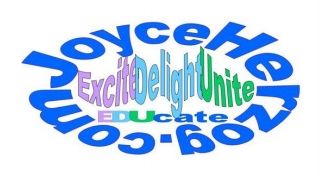
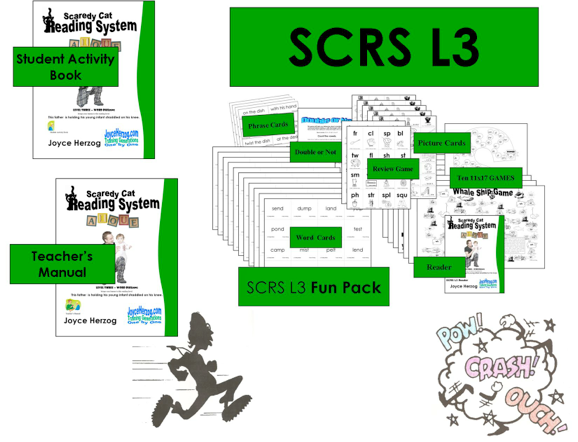







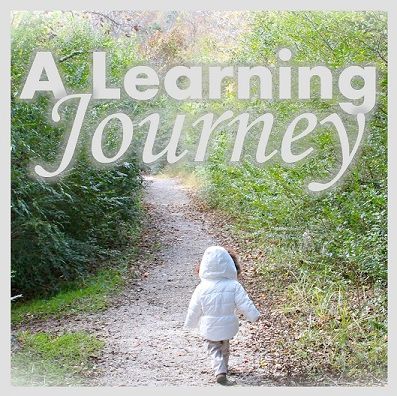






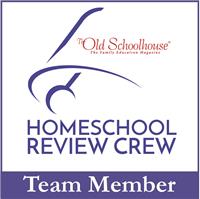
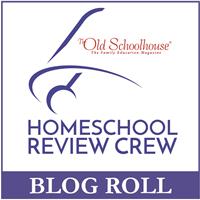




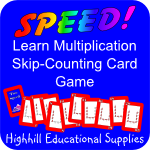
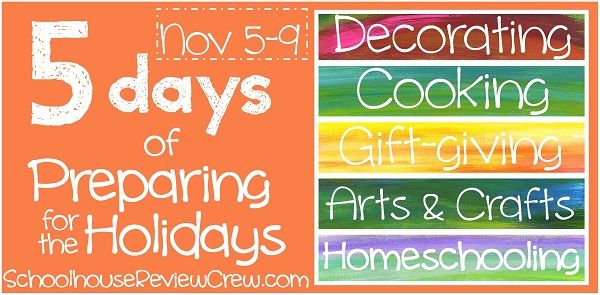
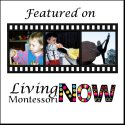


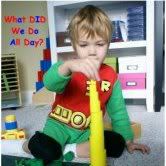

This was a great review.
ReplyDeleteThe Paper Maid
Thank you Deborah! I appreciate the comment. Heading over to your blog to check it out!
ReplyDelete